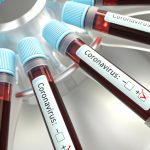Data contradicting the conclusions of this study have already begun to emerge, including a single-center, open-label, randomized, controlled trial of 30 patients with COVID-19 recently published by Jun et al. in the Journal of Zhejiang University.5 Contrary to the paper by Gautret et al., this study found no significant difference with regard to viral clearance among patients who received hydroxychloroquine (13 of 15; 87%) or usual care (14 of 15; 93%). Neither study was adequately powered to address meaningful outcomes or serve as the basis for strong recommendations. Multiple larger randomized controlled trials are actively recruiting (ClinicalTrials.gov), but their results may not be available for many months.
In the meantime, it seems likely that hospital systems and providers will prescribe hydroxychloroquine to patients with COVID-19. Although the data supporting its use are of low quality, no studies to date have been sufficiently rigorous to refute this practice. Unpublished reports from China have reportedly been promising, and the preclinical mechanistic studies support the bioplausibility of hydroxychloroquine as a treatment for COVID-19. Many rheumatologists have become accustomed to recommending hydroxychloroquine as a generally well-tolerated therapy; we should forgive others for feeling similarly in the face of a pandemic. In the near term, at least, we will have to adapt to this new reality.
Adaptation does not mean acquiescence, however, and we should encourage rational use of hydroxychloroquine whenever possible. No data exist for prescribing hydroxychloroquine for post-exposure prophylaxis, and we should not prescribe it for this indication. Patients already taking hydroxychloroquine should be discouraged from sharing their valuable supply or from increasing their doses. For a patient with rheumatoid arthritis or lupus, the harm from running out of hydroxychloroquine seems likely to outweigh any possible benefit to others with regard to COVID-19. Finally, we and other providers should not write prophylactic prescriptions for ourselves or our family. We should be held to the same standards we recommend in practice, which dictate judicious use of this valuable medication.
In addition to avoiding these practices, we can take a number of positive steps to lessen the impact of hydroxychloroquine shortages:
- Hydroxychloroquine has a half-life of many weeks, and in many cases, the answer to a few missed doses should be reassurance;
- Build a list of pharmacies in your area that have supplies available, and be ready to direct your patients appropriately;
- Engage with your medical center to ensure that patients with rheumatologic diseases have a voice at the table when treatment algorithms are created; and
- Above all, be available. Prophylactic phone calls and responding quickly to patient queries will be necessary to assuage their reasonable concerns.
Reasons for optimism also exist. Enthusiasm for hydroxychloroquine at the highest level of government should encourage rapid escalation of production. Pharmaceutical companies, including Mylan, Teva, Amneal and Novartis, have pledged to produce or donate nearly 200 million doses. If these totals materialize or convincing data refute Gautret et al.’s findings, the supply of hydroxychloroquine should return to normal before our patients experience substantial harm.



